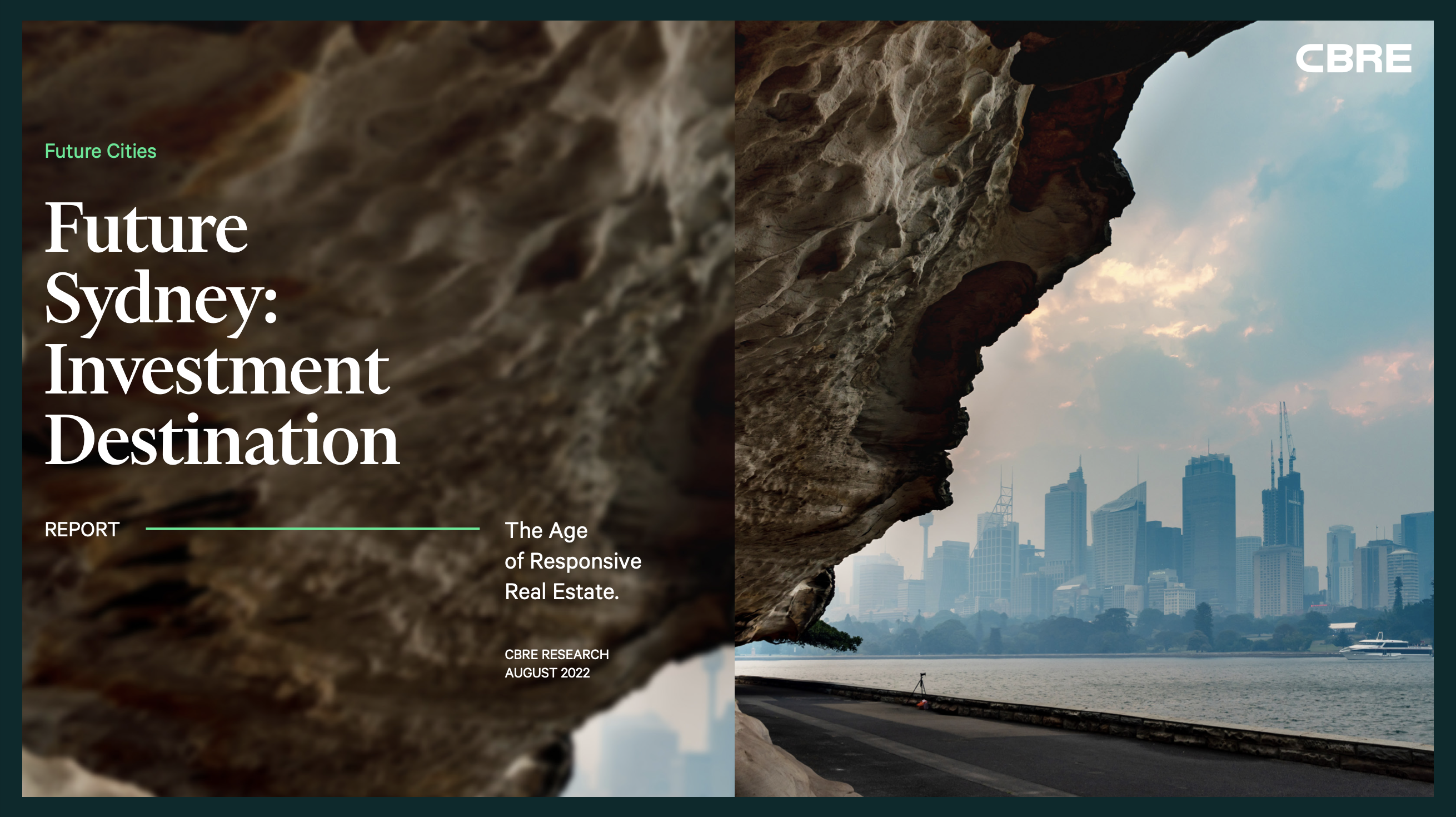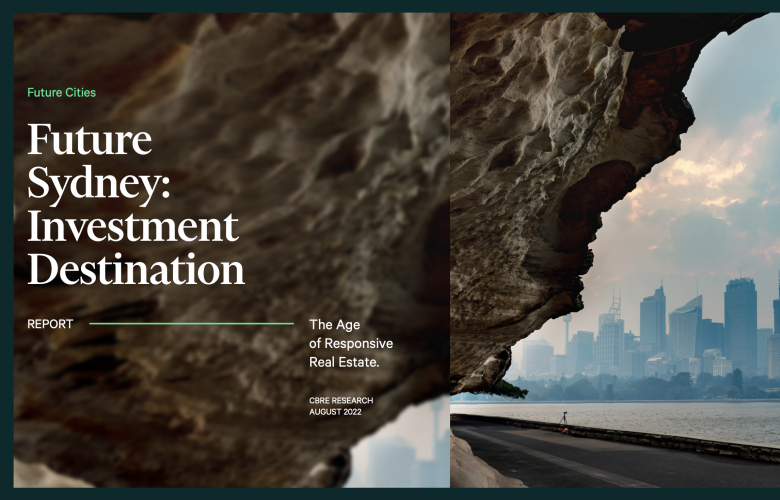What will future Sydney look like?
Contact
What will future Sydney look like?
By 2030, Sydney is destined to be a place where shopping centres are the new high streets, fostering community and social interaction says CBRE’s new Future Sydney research report.
By 2030, Sydney is destined to be a place where shopping centres are the new high streets, fostering community and social interaction. Augmented reality will be central to the consumer retail experience alongside unique in-store experiences, while warehouses will be hyper-connected, harnessing robotics to ensure speed and agility.
Sydney will have been entrenched as a global tech and life sciences hub, aided by the rise of technology-related businesses and the city’s competitive advantages.
ESG will meanwhile be at the heart of corporate decision making, with net zero buildings becoming the norm, company brands being intrinsically tied to how they impact on society and climate tech being the largest venture capital vertical.
These are some of the take aways from CBRE’s new Future Sydney research report.
Notes CBRE’s NSW Executive Managing Director Andrew Roy, “As Australia continues to emerge from the pandemic, Sydney’s position as a global gateway city and investment hub is firmly back in focus and the outlook is positive across all the major commercial property asset classes. At a more fundamental level, Sydney is expected to be at the forefront as ESG considerations, consumer expectations and technological advancements reshape the property industry and investor decision-making.”
Population growth will be a key driver, with Sydney identified as one of the fastest growing cities of the developed world, with 8.4% population growth forecast between 2020 and 2030.
Future Sydney report author Sass J-Baleh says this growth, fueled by the return of net overseas migration, will underpin significant demand shifts that will help reshape the market.
“Population growth alone will drive demand for an estimated 450,000 sqm of office floor space, one trillion dollars in discretionary and non-discretionary retail goods and 2.3 million square metres of industrial & logistics floorspace between now and 2030,” J-Baleh notes.
Over the same period, Sydney’s investible universe across the major commercial property asset classes (office, industrial and retail) is expected to grow by 26% to $464 billion.
“Government allocations to infrastructure will be another key Sydney growth driver, with numerous key infrastructure projects underway or in the planning stages. This will support Sydney’s population increase, create efficiencies across the freight network, and better integrate the CBD with the Western Sydney Aerotropolis – improving accessibility and livability,” J-Baleh says.
A significant increase in on-line shopping will also help to redefine the Sydney property landscape. CBRE forecasts the NSW e-commerce penetration will increase from 15.5% to 26% by 2030, driving the requirement for 1.2 million square metres of industrial and logistics space in Sydney.
Click here to download the report.








